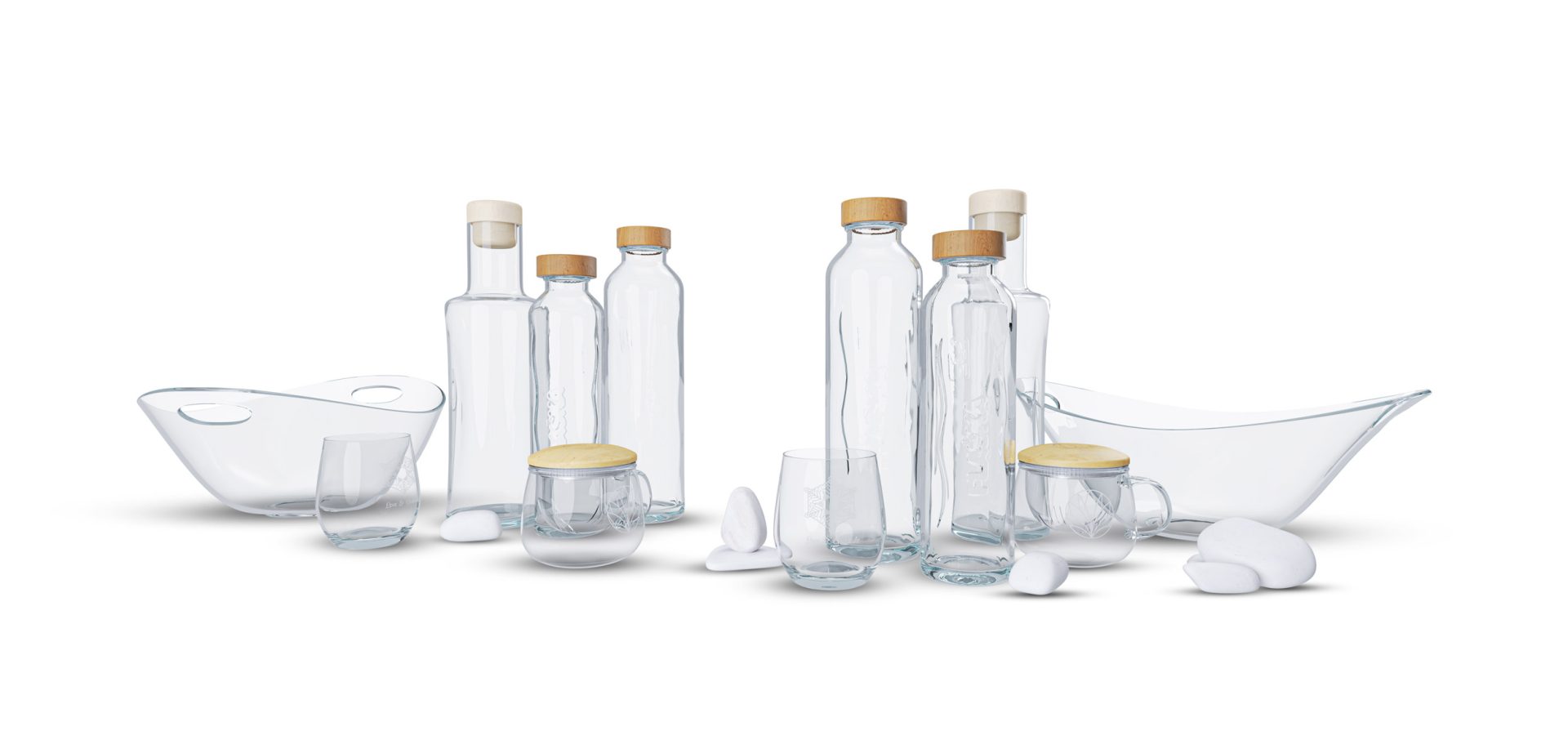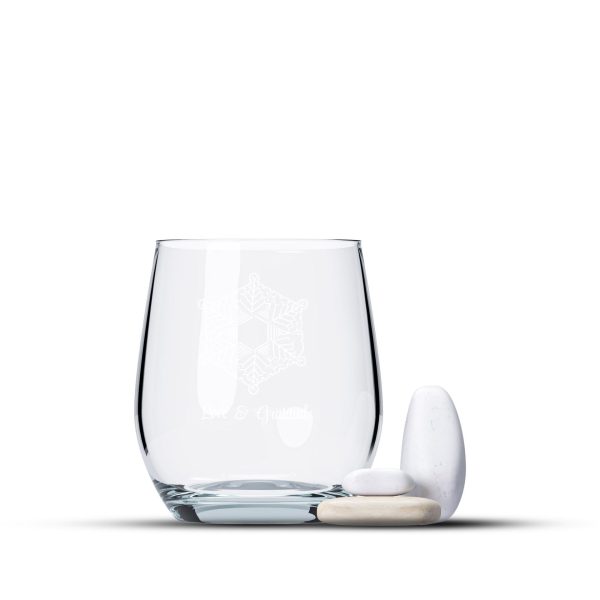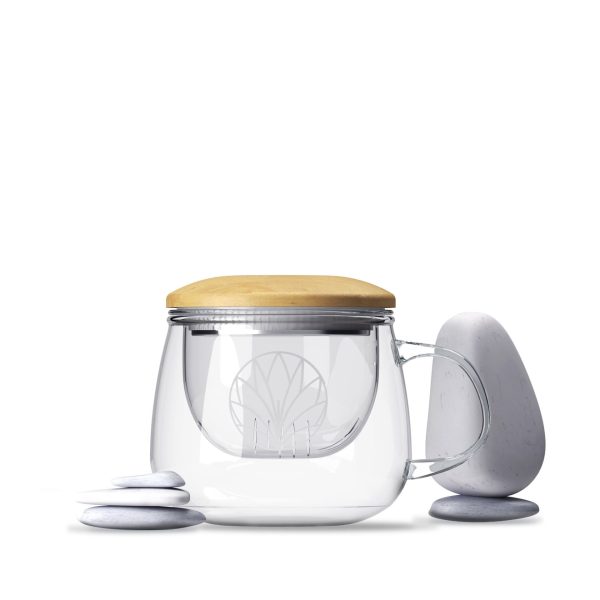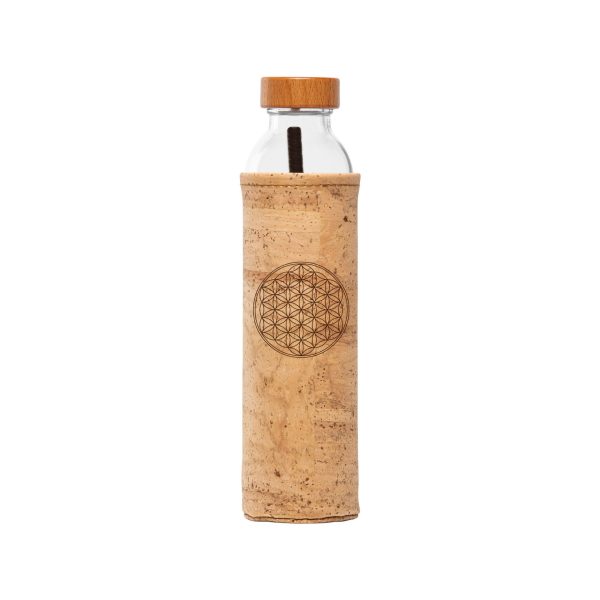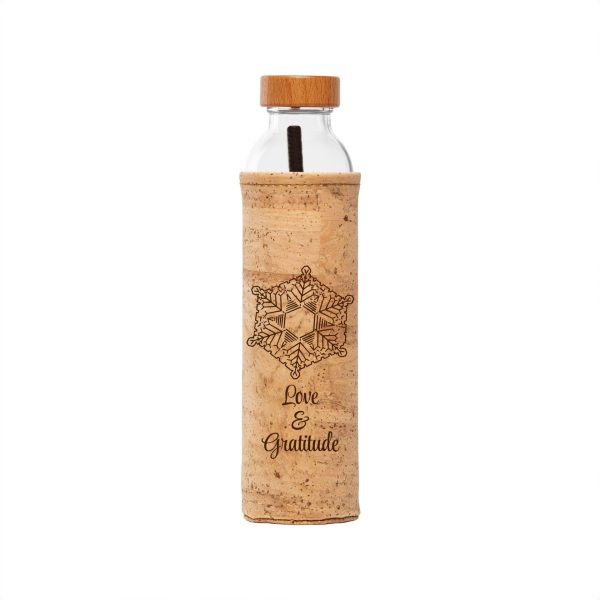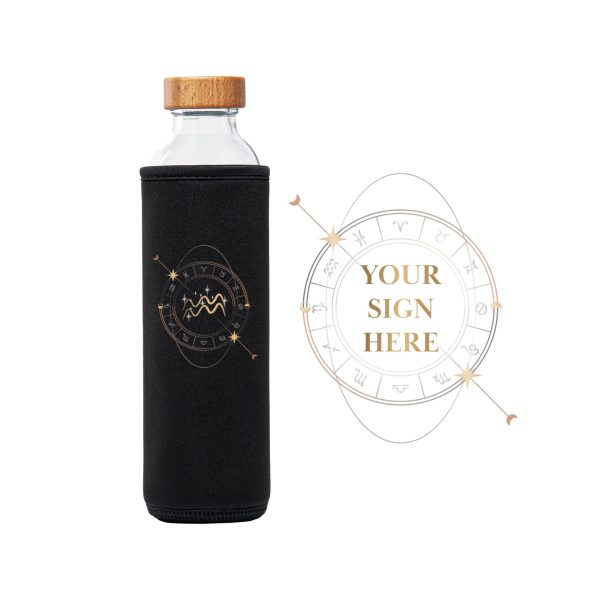Общи въпроси относно Flaska
Издръжлива ли е бутилката Flaska?
Бутилките Flaska са изработени от по-дебело, по-здраво стъкло, което ги прави устойчиви на удари, преобръщане и други малки инциденти.
Какъв размер да избера?
Размерът на бутилката Flaska зависи от вашите навици за хидратация и къде планирате да я използвате най-често. Ако често сте в движение или нямате редовен достъп до вода, препоръчваме по-голямата Flaska (0,75 л), която предлага по-голяма независимост между пълненията. По-малката Flaska (0,5 л) е удобна за ежедневна употреба в офиса или у дома, където е възможно по-често пълнене. За домашна или офис употреба препоръчваме също стъклената кана Vodan (1 л). Най-важният фактор при избора на размер са вашите навици за хидратация и колко вода пиете дневно.
Какви размери са налични и колко тежат?
- Flaska 0.5L: 27 см × 7 см, 508 г
- Flaska 0.75L: 30 см × 8 см, 667 г
- Гарафа Vodan 1L: 31 см × 9 см, 600 г
Съдържа ли бутилката Flaska BPA?
Не. Flaska е изработена от стъкло, така че не съдържа BPA.
Къде се произвежда Flaska?
Flaska е проектирана, разработена и създадена в Словения. Всички знания, изследвания и разработки са резултат от словенски опит и над 20 години опит в структурирането на вода. Бутилките Flaska се произвеждат във внимателно подбрана италианска стъкларска фабрика с дългогодишна традиция и високи стандарти, където те прецизно следват нашите дизайни и спецификации. Специалният процес на програмиране на стъклото с вибрационна информация се извършва в нашия център в Бегуне, Словения, което гарантира качеството и автентичността на всяка Flaska.
Общи въпроси относно структурирането на водата
Какво е структурирана вода?
Структурираната вода е вода, чиито молекули са подредени по по-организиран начин, подобен на прясната изворна вода в природата. Flaska използва специалния процес на програмиране Glass & Vibe, за да прехвърли вибрационна информация в стъклото, което помага на водата да се върне към естествената си структура. Резултатът е вода с по-добър вкус и подобрени свойства.
Какво означава „програмиране на стъкло“?
Програмирането на стъклото е четирифазен процес, при който ключовата технология Glass & Vibe позволява вибрационна информация да бъде кодирана в него.
Каква информация съдържа стъклото?
Стъклото съдържа внимателно подбрана вибрационна информация, която е хармонична и полезна за възстановяване на водата до оригиналната ѝ изворна структура.
Колко време отнема структурирането на водата?
Процесът започва веднага щом налеете вода в Flaska. Препоръчваме поне 5 минути контакт, за да се постигне оптимално структуриране. За най-добър ефект разклатете бутилката преди пиене, тъй като това ще увеличи максимално ефективността на структурирането.
Ами ако искам да подновя вибрационната програма след няколко години?
Вибрацията, кодирана в стъклото Flaska, е постоянна, не изтича и не се износва.
Какво може да повлияе на ефективността на Flaska с течение на времето?
Стъклото не се износва с времето, нито вибрационното кодиране. Flaska обаче е чувствителна към силни електромагнитни полета, като тези от микровълнова фурна или индукционна печка. Препоръчваме да я държите на поне един метър разстояние от такива източници. За да запазите качествата ѝ, е препоръчително миенето на Flaska на ръка.
Врящата вода разрушава ли структурата?
Ако водата се превари, по-голямата част от структуриращия ефект се губи. Затова препоръчваме да приготвяте топли напитки (като чай или кафе) отделно и след това да ги наливате във Flaska. За топли напитки препоръчваме и стъклената чаша Angelica, която е специално проектирана за тази употреба.
Какво означава символът на дъното на бутилката?
Символът е космограм или енергиен символ, проектиран от геоманта Роби Лавин – той предпазва програмираното стъкло от негативни влияния и свързва водата с първоначалната ѝ структура.
Общи въпроси относно поддръжката
Как да почиствам Flaska?
Не препоръчваме почистването на Flaska в съдомиялна машина. Почиствайте я с подходяща четка и екологичен препарат. Котленият камък се отстранява най-добре със смес от оцет и вода, която трябва да се остави във Flaska за една нощ и след това да се изплакне. Можете също да използвате сода бикарбонат.
Мога ли да използвам Flaska за сокове или други напитки?
Да, можете да наливате сокове, чай или други напитки във Flaska. Препоръчваме обаче да използвате Flaska за питейна вода, тъй като водата е напитката, която най-добре се възползва от нейните енергийно структуриращи свойства.
Как да премахна котлен камък?
Напълнете бутилката с 1/3 оцет и 2/3 вода, оставете за една нощ и изплакнете.
Подходяща ли е Flaska както за топли, така и за студени напитки?
Да, здравото стъкло може да се справи и с двата температурни диапазона. Избягвайте обаче да наливате вряла вода в Flaska, тъй като това може да доведе до напукване на стъклото. За топли напитки препоръчваме чашата Angelica.
Специални въпроси на клиентите относно Flaska
Премахва ли Flaska токсините от чешмяната вода? Колко време трябва да чакам, преди да я пия?
Flaska не премахва потенциални токсини от водата – за това ви е необходимо филтриращо устройство. Flaska неутрализира токсините с до 45%, както е потвърдено от теста с Allium cepa. Ако водата ви е с много лошо качество, не можете да пропуснете филтрацията. Ако обаче водата е поне със средно качество, Flaska ще я подобри значително и допълнителната филтрация е ненужна.
Ако налея вода от Flaska в обикновена чаша, остава ли тя структурирана и за колко време?
След като се налее в обикновена чаша, водата остава структурирана поне 24 часа. Пиенето директно от бутилката осигурява допълнително предимство, тъй като вибрационната структура може допълнително да се адаптира към вашата лична енергия. Накратко, наливането ви дава структурирана вода, докато пиенето директно от Flaska ви осигурява персонализирана вибрационно структурирана вода.
Мога ли да съхранявам мляко във Flaska в хладилника?
Нямаме опит със съхранението на мляко във Flaska, така че не можем да дадем ясна препоръка. Flaska е предназначена предимно за вода, където вибрационното ѝ програмиране подпомага процеса на структуриране. Би било интересно да се тества, особено с пастьоризирано и хомогенизирано мляко, тъй като Flaska влияе и на други течности. Млякото обаче е по-чувствително от водата и се разваля бързо, независимо от опаковката. Ако решите да го опитате, моля, споделете опита си с нас.
Flaska структурира ли само изворна вода или работи и с RO (обратна осмоза) и дестилирана вода?
Изследванията показват, че Flaska структурира също RO и дестилирана вода, но процесът е много по-ефективен, когато водата съдържа минерали. Препоръчваме да добавите няколко капки лимонов сок, щипка сол или и двете към чиста H₂O.
Съдържа ли Flaska олово? Тествана и сертифицирана ли е като 100% безоловен продукт?
Flaska е изработена от безопасно, тествано стъкло. Въпреки че може да има много малки следи от олово в стъклото, водата от Flaska е 100% безоловен продукт.
Стъклото се категоризира в три основни вида:
- Кристално стъкло – съдържа около 20% олово и е проблематично за здравето. Обикновено се използва за декоративни предмети и е ограничено на някои места.
- Обикновено натриево-калциево стъкло – най-често използвано в хранително-вкусовата промишленост. Съдържа незначителни следи от олово и е напълно безопасно. Бутилките Flaska са изработени от този вид стъкло.
- Безоловен кристал – висококачествен, но по-скъп за производство. Нашата кана Vodan и чашата „Любов и благодарност“ са изработени от този материал.
Купих Flaska на 12.11.2020 г., но не съм я използвал от известно време. Сега се притеснявам, че може да е образувала мръсотия или микроби. Трябва ли да я сменя?
Стъклото е много безопасно и инертно – микробите трудно се развиват върху него. Просто почистете добре бутилката; препоръчваме смес от вода и сода бикарбонат и я оставете да действа за една нощ. Програмирането на Flaska остава активно – всички Flaska са постоянно под вибрационен мониторинг с нашето устройство Quantec. Следователно, структурата на водата остава на същото ниво, както при покупката.
Трябва ли да „зареждам“ моята Flaska на слънце, както някои други енергийни инструменти?
Не, Flaska не е необходимо да се излага на слънце.
Много се интересувам от Flaska; Питър Сейдж ги спомена на своя семинар. Премахват ли хлор и други вредни вещества от водата?
Технологията Glass & Vibe не филтрира хлор или други вещества. За това е необходим външен филтър. Flaska обаче намалява генотоксичността на водата с до 45%, което означава, че намалява отрицателните ефекти на всички вещества (хлор, тежки метали и др.) във водата. Ако водата ви е сравнително добра на вкус, Flaska е достатъчна. Ако вкусът е лош, препоръчваме филтрация.
Мога ли да използвам дестилирана вода или е необходимо да е директно от чешмата?
Най-добре е водата да съдържа поне някои минерали. Ако използвате дестилирана вода, добавете малко сол и лимонов сок. Чудесно решение е и морската плазма от Agua de Mar – горещо я препоръчваме.
Използваме RO филтър, който добавя калций и минерали към водата. Ще работи ли Flaska с тази вода?
Да, Flaska работи отлично с RO вода, обогатена с минерали. Добавянето на минерали е важно по две причини:
- Тази вода е по-добра за организма от чистата RO вода (която е „празна“);
- Структурирането на водата е по-ефективно, когато има минерали.
Flaska е идеално допълнение към вашата система за пречистване на вода.
Има ли научни доказателства, че структурираната вода запазва свойствата си след консумация?
Съществува разминаване между традиционната наука и новите области на науката относно структурираната вода. Класическата наука до голяма степен отрича съществуването ѝ, докато новите научни области активно я изследват. Водещият експерт в тази област е проф. Джералд Х. Полак – можете да гледате неговите презентации в YouTube. За нас личният опит е ключов. На нашия уебсайт, в секцията „Опознайте Flaska“, ще намерите много тестове, показващи ефекта на Flaska върху структурата на водата. След повече от 15 години на пазара и стотици хиляди доволни потребители, ние вярваме в силата на Flaska. Хората съобщават, че водата е по-вкусна и пият повече – което е ключово за здравето. Ако искате да проучите темата по-задълбочено, препоръчваме книгата „Танцуване с вода“ от М. Дж. Пангман, която съдържа много научни препратки.
Исках да попитам за енергииния символ, който се намира на дъното на стъклената чаша Angelica.
Всеки енергиен символ (космограм или сигил) е уникален и е създаден специално за целта на конкретен продукт и неговата вибрационна програма. Символът върху чашата Angelica е направен с помощта на свещена геометрия и целта му е да донесе вътрешен мир и хармония. Освен това, той подобрява функционалността на чай, кафе или всяка друга напитка за човека, който го използва.





